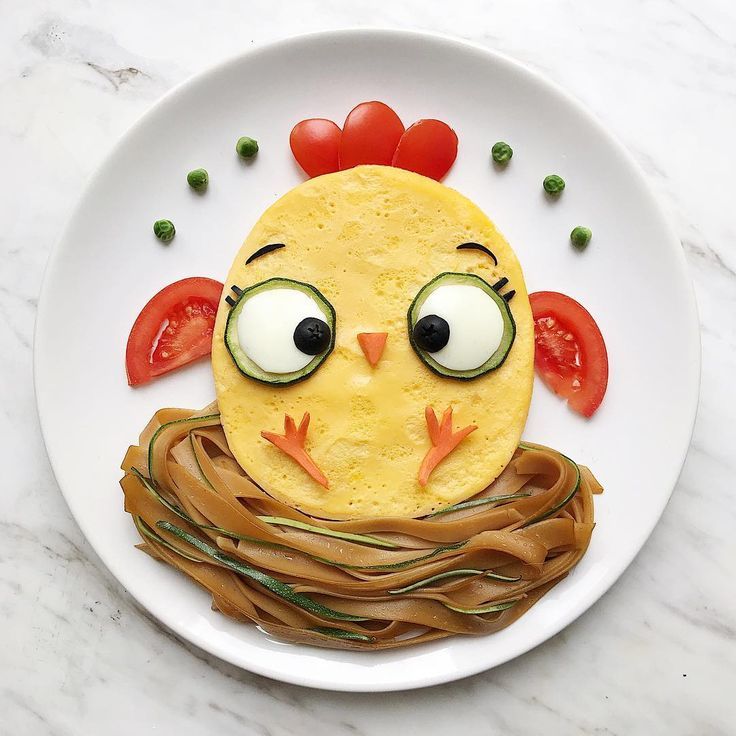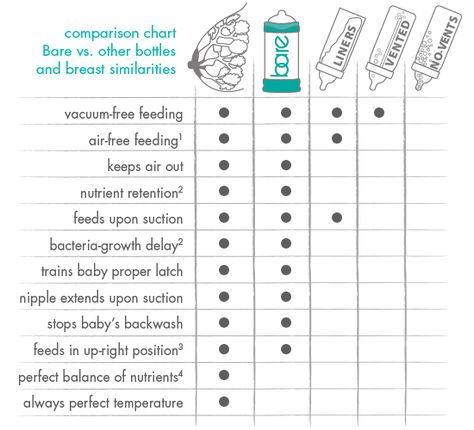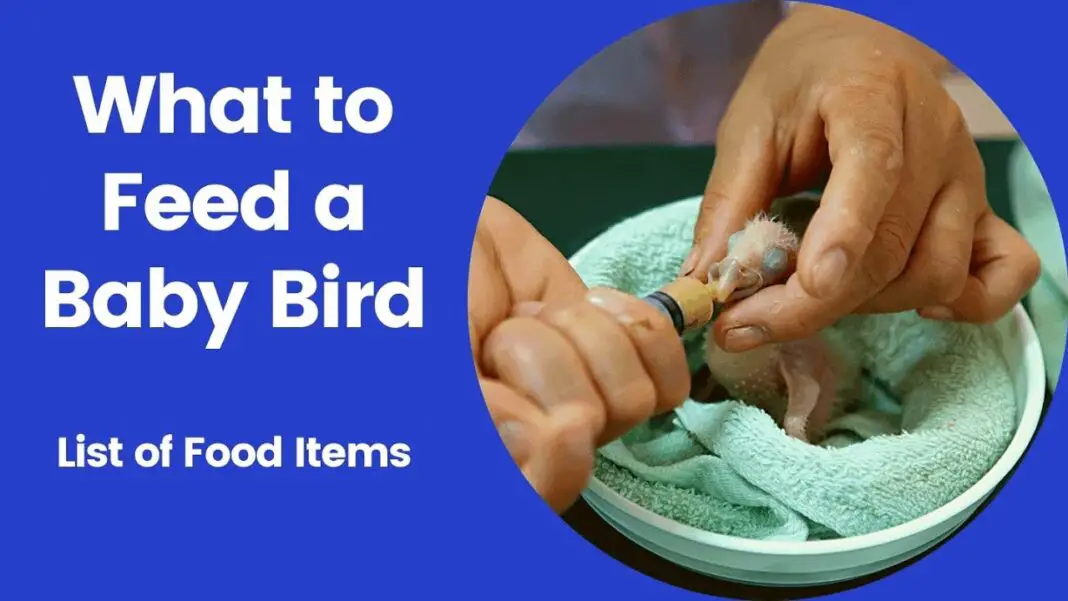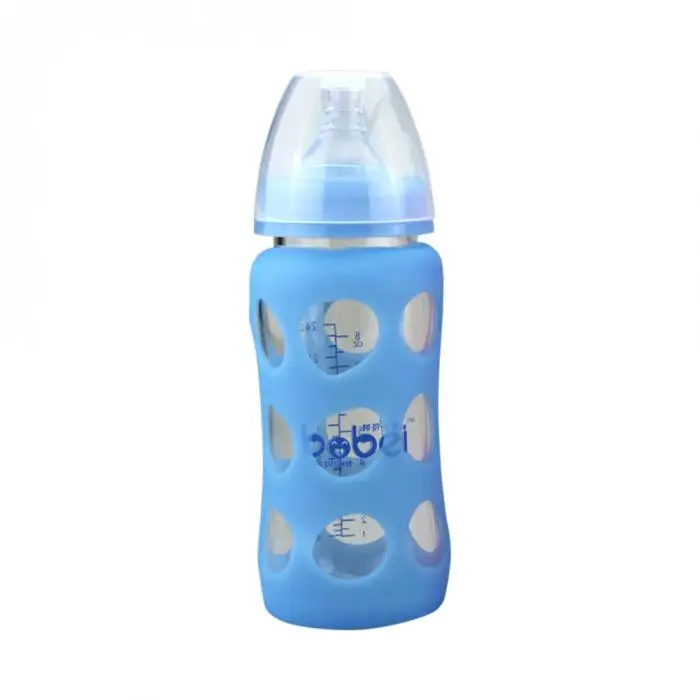Baby ball python food
What To Feed Baby Ball Pythons
Do you have a baby ball python, but you’re worried about feeding it the wrong thing?
Are you concerned about the safety and health of your small python’s diet?
It’s important to make sure you always feed our ball python’s the right thing, but owners need to make sure the baby ball python gets what it needs.
This is why you need to know what to feed a baby ball python.
Baby ball pythons still eat only protein-based animals just like adult ball pythons do. The main thing to watch for is the prey is of the correct size. Pinky mice or fuzzy rats (babies of these forms) and large crickets are the typical diets for baby ball pythons.
Check out the rest of the post for more details on what and how to feed a baby ball python.
Table of Contents
What To Feed Baby Ball Python
This section deals with a little more detail on what to feed a baby ball python.
There are a few options and other elements to consider.
Size
The size of the food is the most important concern with baby ball pythons.
They can’t handle large food as well as adults can.
It’s much more likely for a baby to choke and regurgitate than it is an adult.
The size rule applies to baby and adult ball pythons alike, but for babies, this is a hard and fast rule with little wiggle room.
The prey should be no larger than the snake’s body at mid-length.
With baby ball pythons, this limits the types of food available to give them.
The next sections go over the most common choices for food.
Pinky Mice
The most common choice for baby ball python food is pinky mice.
Despite the unique name, this isn’t a special breed of a mouse at all.
Pinky mice (also written as a pinkie) are baby mice whose fur hasn’t fully grown in.
As a result, these mice have a pink look to them and are very small.
This is where the name pinky mice come from.
Though rats are usually better for ball pythons, at the small-sized baby pythons, it won’t matter which you use.
Another reason pinky mice are more typical is how they’re more readily available.
Most snakes will eat mice throughout their lives, and most snakes will eat pinky mice as babies themselves.
This high demand has resulted in high supply as well.
Pinky mice are the correct size, affordable, and easily available.
Fuzzy Rats
Fuzzies are baby rats or juvenile mice.
Rats are considered the better staple food for the health of ball pythons.
They’re one of the ball python’s natural prey.
But at the baby size, ball pythons aren’t as picky, and fuzzies aren’t as easily available as pinky mice.
If you do pursue fuzzies, make sure the size is correct for the size your ball python currently is.
Large Crickets
For baby ball pythons, large crickets are also an option.
You will need to sprinkle a dietary supplement or gut load the crickets beforehand to make sure they provide the necessary nutrients for the snake.
As the snake ages, it will quickly grow out of the crickets, but as young ones, they work just fine.
How To Feed Ball Python
Feeding ball pythons is surprisingly simple.
In most cases, all you need to do is put the prey in the cage and watch it go to town.
Young ball pythons may struggle more to find the food.
Make sure you place it near the ball python’s head, so it senses the food is nearby.
Live prey is always better and will be easier to feed to the snake.
When live prey moves, it attracts the attention of the python and activates its hunting instincts.
Live prey also has a powerful scent.
For frozen prey, make sure it’s naturally thawed out before feeding.
This will help with the smell (and the safety of the python).
You may wish to brain the prey or tap the snake with the food lightly to get its attention.
Young ball pythons only need to eat once every 5-7days.
This may not seem like enough, but it’s exactly right for them.
As they get larger, you’ll find they eat less often and turn their nose up at the food.
This is normal.
Adult ball pythons only eat every 10-14 days.
The python will bite and wrap itself around the food, then proceed to swallow the prey whole.
Over the next 48 hours, it will work on digesting the food, and you’ll see the lump in its body.
During this time, don’t handle the ball python.
Handling a ball python while it’s digesting may make it vomit up its food.
This is hard on the snake’s body and prevents nutrient absorption.
How Long Can A Baby Ball Python Go Without Eating?
While adult ball pythons may go 3-4 months without eating and up to 6 months (though they shouldn’t), the baby ball python has no reason to go anywhere near this long.
Every 5-7 days, you need to offer the ball python food.
There are only two main reasons a baby ball python won’t eat.
The python is ill.
This is the first thought many owners have when something odd with their pet happens.
Often, it’s not about illness, but the next reason.
However, if you see some companion signs of illness with a lack of appetite, don’t be afraid to get your pet checked out.
Here are common signs of illness:
- Visible injuries or “kinks” in their bodies
- Raspy breathing
- Pus and discharge in the mouth or eyes
- Changes in droppings
- Lethargy (lack of movement in the extreme)
- Mouth breathing
- Lack of appetite
- Cloudy eyes
- Stargazing (stiff body with head stuck up)
The ball python is about to shed.
Ball pythons and most reptiles are the same in this way. If they’re about to shed their skin, they won’t eat.
Younger reptiles shed more often because they’re growing more often.
Baby ball pythons may shed up to once per week or more if they’re hitting a growth spurt.
If your plan to feed them falls one of these days, they just won’t eat.
Look for signs of shedding, which include whitening skin, glassed over eyes, and cranky behavior.
Don’t help along in the shedding process.
Let it happen naturally.
Once it’s over, then offer food to the ball python again. It usually eats quickly after a shed.
What To Do If Your Baby Ball Python Won’t Eat
There are times outside of the reasons above your ball python will be reluctant to eat.
Here are a couple of tricks to use to get them to eat.
Brain the food – Sometimes frozen and thawed prey won’t be small strong enough to activate a snake’s instinct to eat.
This happens on occasion with live prey too.
One almost fool-proof tactic is to make a small cut in the prey’s skull and press on the prey’s body until blood and other materials come out.
This puts more scent in the air and helps the snake recognize the prey as food.
Tease the python – One other tactic includes what’s called “teasing” the snake.
This tactic is especially helpful with baby ball pythons, who sometimes have difficulty finding the food they smell.
With teasing, you take the prey and tap their heads and noses gently.
You may want to move the food around in front of the snake as if it were alive.
When you see the python notice the prey, move your hand away quickly but not so jerky it locks its attention onto your hand.
Let the smell build – Ball pythons hunt in large part by smell, so it’s important to make the prey smell as powerfully as it can.
For frozen and thawed foods, this is tougher.
One trick used by many is to take a small plastic container and poke holes in the top.
Place the thawed food in the container and place the container in the python tank.
Let it sit there for a while.
As the prey warms up, the smell will increase in the small container.
By having small holes in the container, the smell is amplified in the air and attracts the snake’s attention better.
When the ball python begins to inspect the container, you know it’s interested.
It’s at this time you should carefully remove the lid and let the snake go to town.
Conclusion
Now you know about what to feed baby ball pythons.
Pinky mice, fuzzy rats, and large rickets are your go-to foods.
Just make sure, as with all prey for ball pythons, the prey is no larger than the size of the snake’s body at mid-length.
Feed them once every 5-7 days, and your young ball python will develop just fine.
What Do Baby Ball Pythons Eat?
As an Amazon Associate I earn from qualifying purchases.
The most common concern faced by ball python owners is what to feed their pets. When they are having difficulties maintaining a feeding schedule for their snakes, this issue usually comes up.
Because each animal has its own set of nutritional needs in order to stay healthy in captivity, so do all reptiles. While some skinks have a wide range of foods, others, such as ball pythons, are unable to do so.
As a result, before acquiring a pet, you should conduct extensive studies on it. Especially on its housing needs and diet. Ball pythons in the wild consume everything from rats to birds to tiny animals to lizards.
Especially on its housing needs and diet. Ball pythons in the wild consume everything from rats to birds to tiny animals to lizards.
Despite the fact that baby ball pythons eat nothing but animal protein, they ingest it in a similar way as adult ball pythons do. The most essential thing to note is that the prey must be the appropriate size. Pinky mice and fuzzy rats are the typical diet of baby ball pythons, as well as large crickets.
The most crucial aspect when it comes to baby ball pythons is the size of the meal. They can’t eat as much as adults can, and they can’t tolerate huge meals. A newborn is far more likely to choke and regurgitate than an adult.
The size restriction is the same for both baby and adult ball pythons. However, this is a strict rule with no leeway for interpretation. Smaller than the snake’s body at mid-length is the ideal size for prey. This restricts the amount of food available to give to baby ball pythons.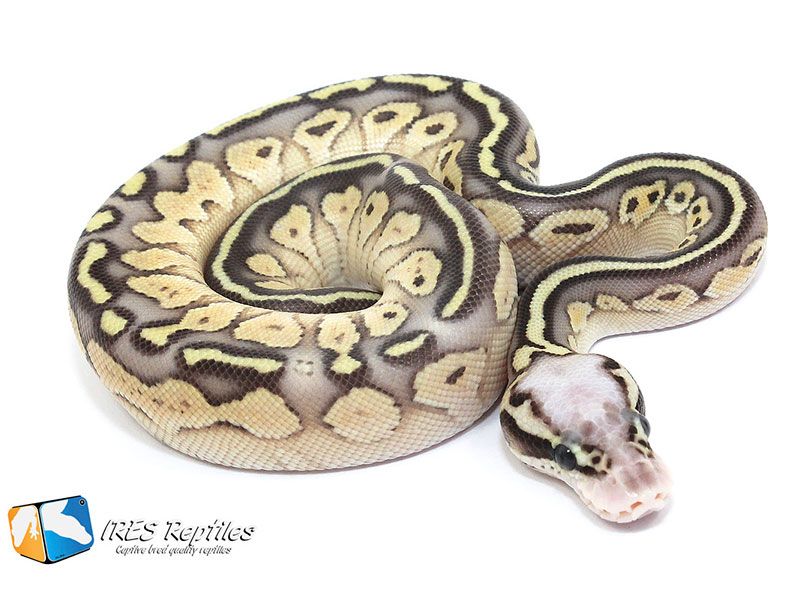
Pinky Mice
Pinky MicePinky mice are the most popular baby ball python diet. Despite their unusual name, this is not a unique breed of mouse. Pinkie mice, sometimes known as pinkies, are young mice with ungrown fur.
Pinky mice have a pink tint to them and are exceptionally tiny as a result of this. The name pinky mice are derived from this. Even though rats are typically preferable for ball pythons, it will not matter which species you pick at tiny baby pythons.
Pinky mice are more common because they’re easier to come by. Because most snakes will eat mice throughout their lives, and most snakes will consume pinky mice as younglings, it’s not unusual for them to be more available. Pinky mice are the greatest, and they’re also readily accessible. The high demand for pinky mice has resulted in an overabundance of them.
Fuzzy Rats
A Fuzzy RatFuzzies are baby rats or juvenile mice. Rats are considered the superior staple food for ball pythons because they are high in protein and low in carbohydrates.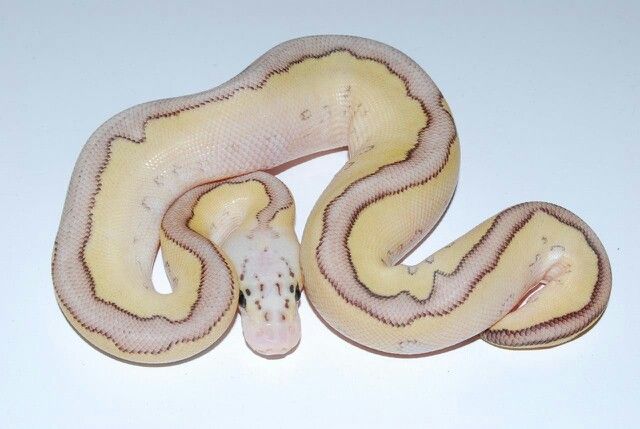 One of the ball python’s natural food sources. When it comes to fuzzy infants, though, ball pythons aren’t as picky, and pinky mice aren’t as readily available. If you want to feed fuzzies, be sure they’re appropriate for your current ball python.
One of the ball python’s natural food sources. When it comes to fuzzy infants, though, ball pythons aren’t as picky, and pinky mice aren’t as readily available. If you want to feed fuzzies, be sure they’re appropriate for your current ball python.
Large Crickets
A CricketLarge crickets are likewise a choice for baby ball pythons. To ensure that the crickets deliver all of the required nutrients to the snake, sprinkle them with a nutritional supplement or gut load them ahead of time. The crickets will last for a long time if the snake is an adult. However, as newborns, they are just fine.
What Do Baby Ball Pythons Eat in The Wild?Ball pythons are ambush hunters who conceal themselves during the day by blending in with their surroundings. There are significant variations in the diet and behavior of male and female ball pythons, which have sexual dimorphism. Males are more reliant on trees than female black bears, with females spending more time on the ground. This has an impact on prey availability and consumption.
This has an impact on prey availability and consumption.
The snakes are nocturnal, and because they feed exclusively on birds and mammals, their diet is restricted to these two species. The males, on the other hand, consume more birds than females, who are more earthbound. Smaller ball pythons under 70 cm have been observed to eat mostly birds, whereas those longer than 100 centimeters preyed primarily on mammals.
Because pythons actively seek out rodents as food, they have been able to adapt effectively to human-altered habitats. They may also be helpful in keeping rodent pests under control on farms. The African giant rat, spotted grass mouse, black rat, shaggy rats, and rufous-nosed rats are some of the rodents that may be found in these locations as preferred meals.
How To Feed Baby Ball Pythons? A Ball PythonThe majority of captive-hatched ball pythons are hungry eaters, despite the fact that it may be difficult to get them to feed. You’ll just need to follow these steps:
Health & Habitat CheckUp
Most ball pythons will not eat if they are sick or in need of appropriate habitat, especially snakes, especially ball pythons.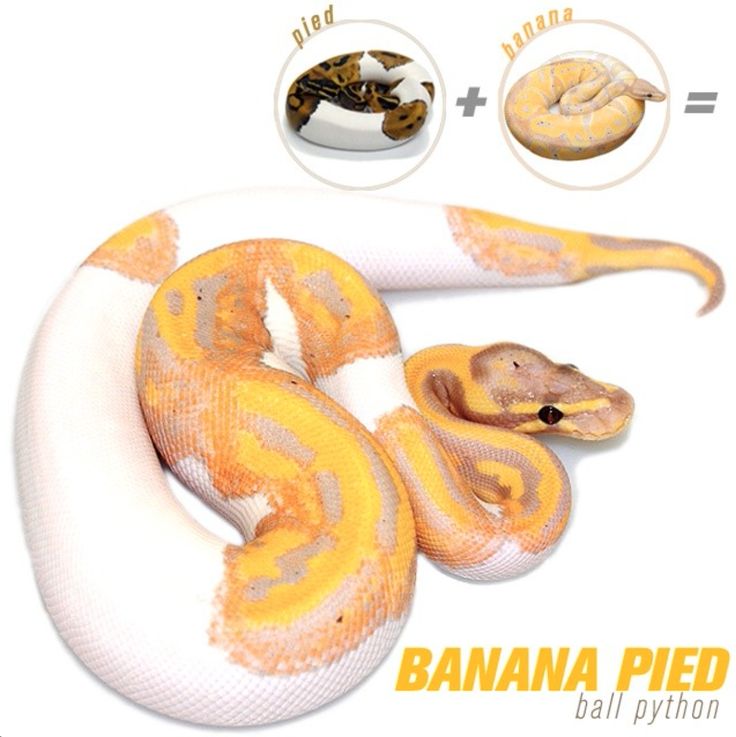 The majority of keepers who encounter feeding difficulties will identify one of these two causes as the root of the problem.
The majority of keepers who encounter feeding difficulties will identify one of these two causes as the root of the problem.
You should have taken your snake in for a vet check right after purchasing him to verify that he is fit. And, by reading the basic Ball Python Habitat Guide, you can ensure that you have the enclosure set up correctly.
Grab The FoodFrozen-thawed rodents are the finest things to feed your ball python. The animals will be delivered to you in a frozen state, but you’ll want to let them warm up to room temperature before feeding them to your snake. Freezing-thawed rodents is the best option for feeding your snake because it eliminates the risk of harm. It also ensures that the rodent does not suffer.
The ideal size for an adult is a juvenile mouse or tiny rat, however, newborns will need smaller rodents. You can get frozen rats from most pet stores that sell snakes. Alternatively, you may buy them online directly from a rodent breeder.
It’s critical not to frighten or stress your snake before, during, or after the feeding procedure. Give him food for at least a few hours after handling him. Try to eliminate any unnecessary distractions while he is away from his cage. If you’re not expecting visitors, dim the room lights somewhat. Before attempting to quiet excited kids or pets, exit the area and consider lowering the room lights a touch.
After introducing the habitat, seize the rat’s neck scruff with the forceps, not his tail. Slowly move it in front of your snake and allow him to strike it for a second before moving on. If he doesn’t react when you animate the prey item, you may need to stimulate life into it (or vice versa).
Release The Food ItemYour ball python strikes and constricts the meal item without hesitation, and perhaps you’ll be able to capture a photo of it. Once he does so, let go of the rodent and slowly back away from the habitat.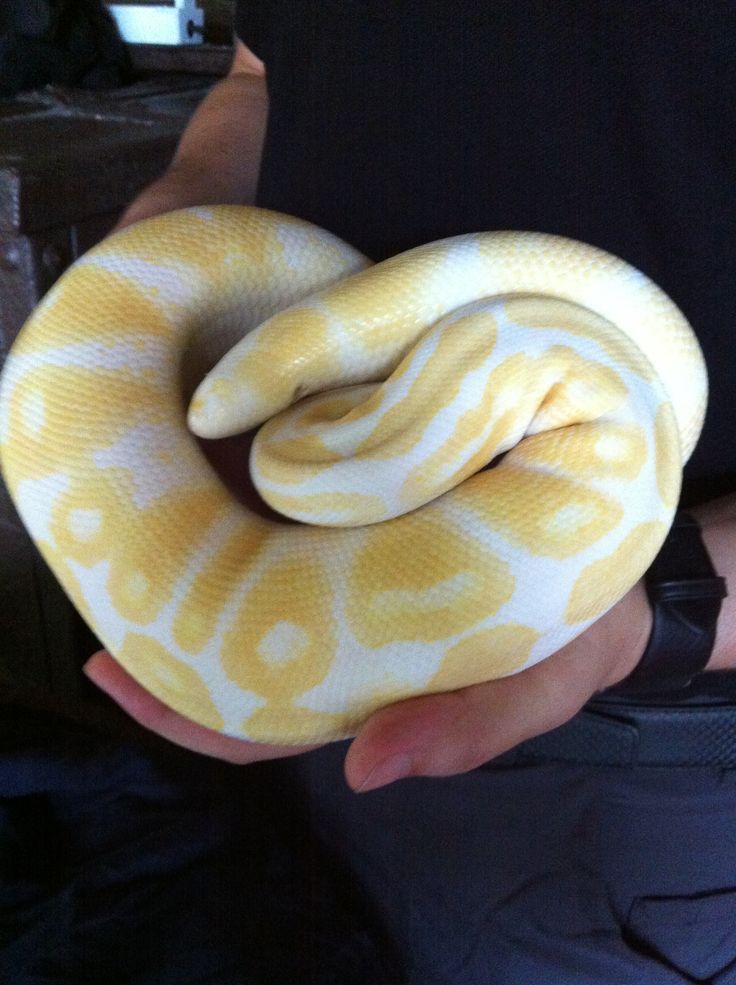 If you want to go, you must do so carefully, as the snake will become alarmed if you open the enclosure too abruptly. Simply leave the chamber open until your snake has finished eating the food item if you want to watch him eat.
If you want to go, you must do so carefully, as the snake will become alarmed if you open the enclosure too abruptly. Simply leave the chamber open until your snake has finished eating the food item if you want to watch him eat.
When administering food to your snake, keep in mind the importance of cleanliness. After all of this, wash your hands with soap and water.
It’s also critical to remember that rats may occasionally shed blood, urine, or feces throughout the feeding process. Clean up any spills as soon as possible, but avoid aggravating your snake in the process. Regurgitation can occur when handling your snake following a meal, so allow at least 24 to 48 hours for your snake to rest quietly after each feeding.
What Are The Natural Predators of Baby Ball Python?The Ball Python does not have many predators in the wild. It is a predator that eats everything from birds to goats to pigs in the wild. The python may capture, kill, and eat an animal several times its own size in the wild.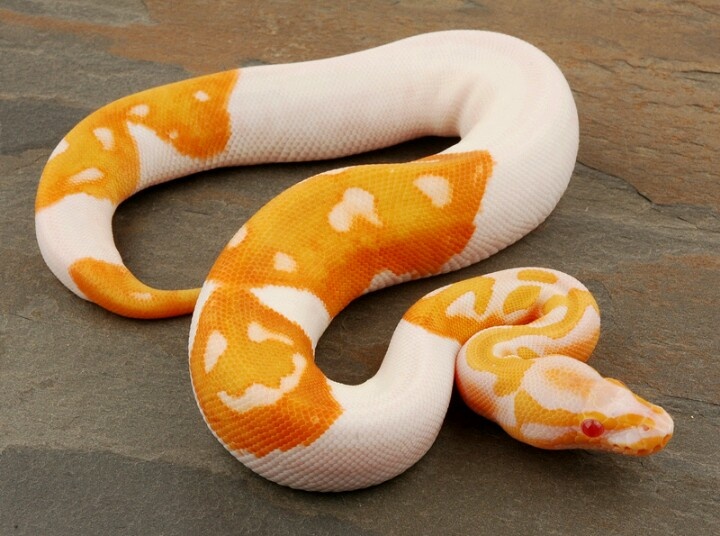 The snake has no natural predators in its native regions in Asia, but it has been introduced to locations like the Florida Everglades, where there are no species that eat pythons.
The snake has no natural predators in its native regions in Asia, but it has been introduced to locations like the Florida Everglades, where there are no species that eat pythons.
Eagles can capture pythons, as can large birds like eagles. The python is a slow-moving species after a substantial meal. Because it hides among tree branches and leaps on its prey, predators have chances of capturing it.
CrocodilesThe python lives in water and is threatened by crocodiles while swimming. A young animal can be taken and eaten by a crocodile of any size, but the older a python gets, the larger it grows. Only a huge crocodile may capture and consume a big python.
Lions, Pumas, and TigersLarge cats, such as lions, pumas, and tigers which may be found in the python’s natural environment, might capture and consume the snakes. Because the python is non-venomous, it’s up to the predator to avoid getting wrapped in it, at which point the snake’s constriction may actually suffocate the predator.
Young pythons can be eaten by cobras. Other snakes, such as anacondas, are also predators of immature animals and devour the eggs when they become available. Because of their size, older pythons are not threatened by other snakes.
HumansHumans are the biggest predator of pythons, frequently killing them for their skin as well as their meat. Pythons that are caught are usually skinned alive and left to die. Humans are the only active predator of the python in areas where it has been introduced, such as the Everglades, however, they seldom consume it.
How Do Baby Ball Pythons Protect Themselves? A Baby Ball PythonBall pythons are one of the most popular pet snakes in the world. They hail from Central and West Africa’s tropical grasslands and savannas, where they prefer to blend in rather than alarm predators. Balling up is their most well-known defensive strategy, hence the name.
When we’re assaulted or missiles are hurled at us, our first impulse is to defend ourselves by ducking down and raising our arms.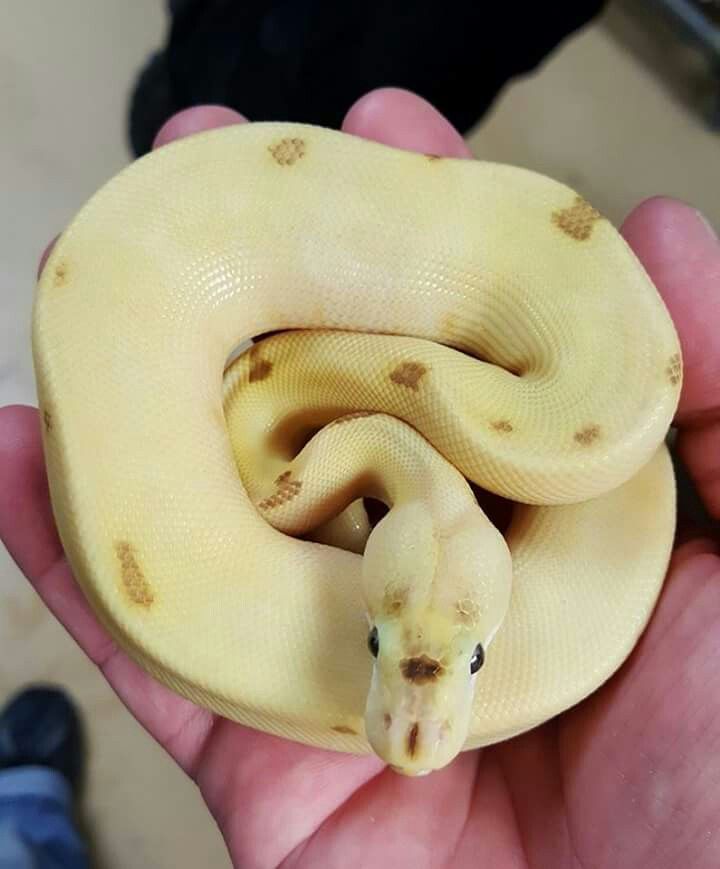 We raise our arms up and conceal our faces because we’re afraid!
We raise our arms up and conceal our faces because we’re afraid!
We don’t want to get injured. Ball pythons are rather similar. When they sense danger or anxiety, they will curl up and hide their heads away. They don’t want to be harmed either, so all they can think about is that you are larger than they are!
If their anxiety or fear gets too high, or they’ve tried rolling up and it hasn’t worked, they may go into a striking posture. This means that their neck is bent in a zig-zag pattern, with a back-and-forth shape, since they are poised to strikeout.
Because of their excellent leverage, ball pythons have better control when holding onto a branch or balancing on the ground. If your ball python attacks you, it does not imply that you are its food. A strike is a brief snap, followed by a retreat.
They are defensive in nature because they bite and refuse to let go. If your snake bites you and refuses to release, that means it confused you for food, gaffa!
Is It Healthy to Eat Baby Ball Pythons?A study conducted a decade ago found that Everglades National Park pythons had dangerously high levels of mercury, a neurotoxin that can harm brain function and the reproductive system.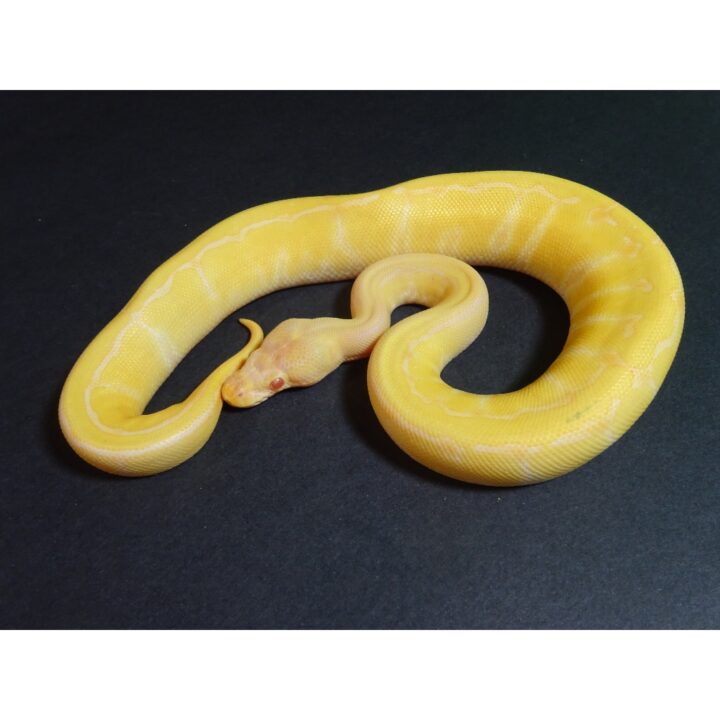 3.5 parts per million is the maximum amount of mercury found in pythons tested by US Geological Survey research scientist David Krabbenhoft. The EPA recommends that consumers avoid eating anything with a mercury concentration of more than 0.46 percent.
3.5 parts per million is the maximum amount of mercury found in pythons tested by US Geological Survey research scientist David Krabbenhoft. The EPA recommends that consumers avoid eating anything with a mercury concentration of more than 0.46 percent.
A python bite may necessitate a variety of treatments, even if it is nonvenomous. It might not only cause damage but also allow germs to enter your body. Even if the injury appears minor, contact a physician.
Bites from your pet ball snake may be treated by cleaning the wound with warm water and soap. To aid the healing process, you might want to wrap the bite region in bandages to prevent infection.
Even if the wounds appear minor at first, bites that are more serious may require immediate medical attention. A severe bite can happen if you keep your pet ball python clamped on your skin for more than a few seconds.
Amazon and the Amazon logo are trademarks of Amazon. com, Inc, or its affiliates.
com, Inc, or its affiliates.
Royal python - description, care, feeding, maintenance and breeding at home
2
Let's talk about its origin, features and content at home.
PANTERIC pet store
107023, Russia, Moscow, m. Semenovskaya, st. Malaya Semenovskaya, 28, building 13
+7 (499) 391-80-00
The royal python has long won the love of terrariumists. Despite its length and heavy weight, the snake impresses with its calm disposition, ease of maintenance and beauty. With proper care, such a pet will live 20-30 years. Let's take a closer look at the species, talk about its origin, features and content at home.
This reptile belongs to the genus of true pythons. Scientists note that the snake has not gone through the full path of evolution - this is evidenced by the presence of two light and rudimentary hind limbs. The ancestors of the predator were mosasaurs and giant lizards.
In the photo of the royal python, you will immediately notice its main features. The first is a pronounced large flattened head. The second is the characteristic coloration. Contrasting spots go all over the body of the snake, the color is beautiful and memorable, however, there are morphs in which the pattern is changed, has the form of stripes or is completely absent. The lower part of the individual is usually pale, without a pattern.
The first is a pronounced large flattened head. The second is the characteristic coloration. Contrasting spots go all over the body of the snake, the color is beautiful and memorable, however, there are morphs in which the pattern is changed, has the form of stripes or is completely absent. The lower part of the individual is usually pale, without a pattern.
Females are usually larger than males. In its form, the python is one of the smallest - its length rarely exceeds one and a half meters.
There are especially many such snakes in Africa, large populations are found on the territory of Senegal, Mali and Chad. Reptiles are very fond of heat and humidity. They can often be found near water bodies.
The king python spends a lot of time in its burrow, where it sleeps and lays its eggs. It is not uncommon to see reptiles near people's homes. Interestingly, people usually do not resist such a neighborhood, because the snake does a good job of exterminating small rodents.
Keeping a royal python at home must be accompanied by proper feeding. This reptile is carnivorous. Mice, rats, quails or chickens are fed. For domestic snakes, food should be stored frozen, and served only brought to room temperature or even better slightly warmed up on a lamp or battery, as they react to heat.
The feeding mode is selected individually. It is directly affected by the age, weight of the royal python, conditions of detention. Young animals can eat 1-2 per week, older ones - 1 time per 1-2 weeks.
In winter and during the rutting period, the snake may refuse food for several weeks. Do not worry, because in nature the reptile behaves the same way.
It is very important not to overfeed the snake. One of the potential problems of keeping at home is pet obesity.
The reptile loves to swim and moves quickly in the water. On land, it is not so agile, although it can crawl through trees, climb into hollows and nests created by other animals.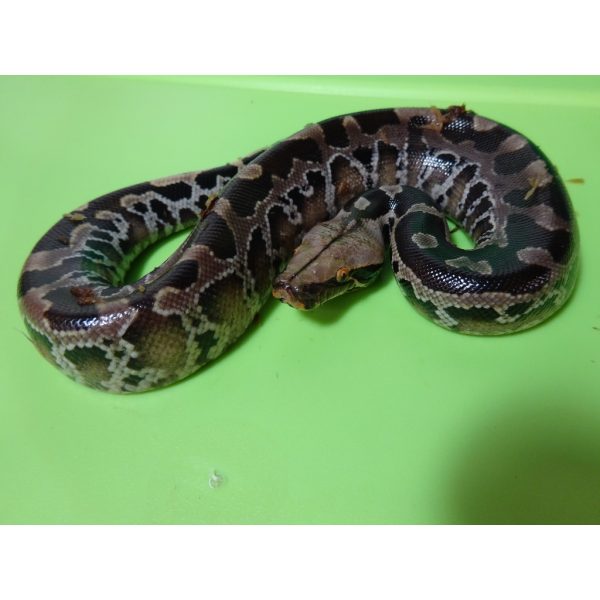 She leads a predominantly terrestrial lifestyle.
She leads a predominantly terrestrial lifestyle.
Pythons are loners. They can form a pair only for a short period to continue the family during the mating season. The inhabitant of the terrarium becomes active at night, sleeps more often during the day.
The snake tolerates the neighborhood with a person very well. She does not attack children, does not bite, unless she considers that you are a mortal danger.
The conditions for keeping the royal python should be as close to natural as possible. There are some important tips for setting up a terrarium:
- The place must be spacious. It is best if it is horizontal. The optimal terrarium size for an adult is 90×45×45 cm. For a male, you can take a smaller terrarium — 60×4 5×45 cm. You can immediately purchase a large terrarium, as reptiles grow quite quickly. It makes no sense to buy a small one only for the first six months.
- The terrarium must be ventilated and have secure doors so that your pet does not run away, royal pythons are very curious.

- A woody substrate is poured onto the bottom, such as Rain Forest or Forest Bark. You should not use coconut substrate or shavings, as it is designed for high humidity, which the python does not need, and in the dry state it is very dusty, clogging the snake's airways.
- It is important that there are 1-2 shelters in the terrarium: in warm and cold corners. So the python will be able to choose a comfortable temperature for him.
- Be sure to provide a small pool of water for the reptile to drink from. He must be stable.
- Avoid excessive moisture. Increase humidity during your pet's shedding season.
Several temperature zones are created inside the terrarium. Heating is regulated depending on the time of day. General recommendations:
- The temperature in the warm zone should be between 33 and 38 degrees.
- In the cold - 24-26 degrees.
- At night, the heating can be left on, but no additional heating means should be installed without the recommendation of a specialist.
The terrarium uses fluorescent lamps. For a reptile, a combination of day and night mode is important. The day lasts about 12 hours, in summer it can reach up to 14. Our specialists will help you choose the lamps for the correct change of light modes.
Our company supplies baby and adult king pythons. Our pythons have been bred in captivity for several generations. We will help you choose everything you need to equip the place of detention, provide high-quality feed, answer all questions about care, hygiene, reproduction, and treatment.
You can also watch an informative video about the royal python prepared by our specialists, photos. Call, write or visit us in person.
See also
Iranian eublefar: maintenance and care at home
02/16/22
3435
Author: 3
In this material we will explain how to care for the Iranian eublefar at home. Let's tell you how long lizards of this species live, how they need to be fed.
Let's tell you how long lizards of this species live, how they need to be fed.
Aquarium jellyfish: maintenance and care at home
12/09/21
9947
Author: 5
Let's talk about the features of caring for aquarium jellyfish - lighting features, cleaning rules and diet!
Ciliated banana-eater: maintenance and care at home
02/24/21
71494
Author: 3
Ciliated banana-eaters have the most attractive appearance. We will tell you everything about aquarium equipment, nutrition, health and communication of this reptile with humans.
All instructions
what is important to know what to feed, recommendations
Published: 08/27/2020 Reading time: 5 min. 10053
Share:
The snake as a pet is a growing phenomenon.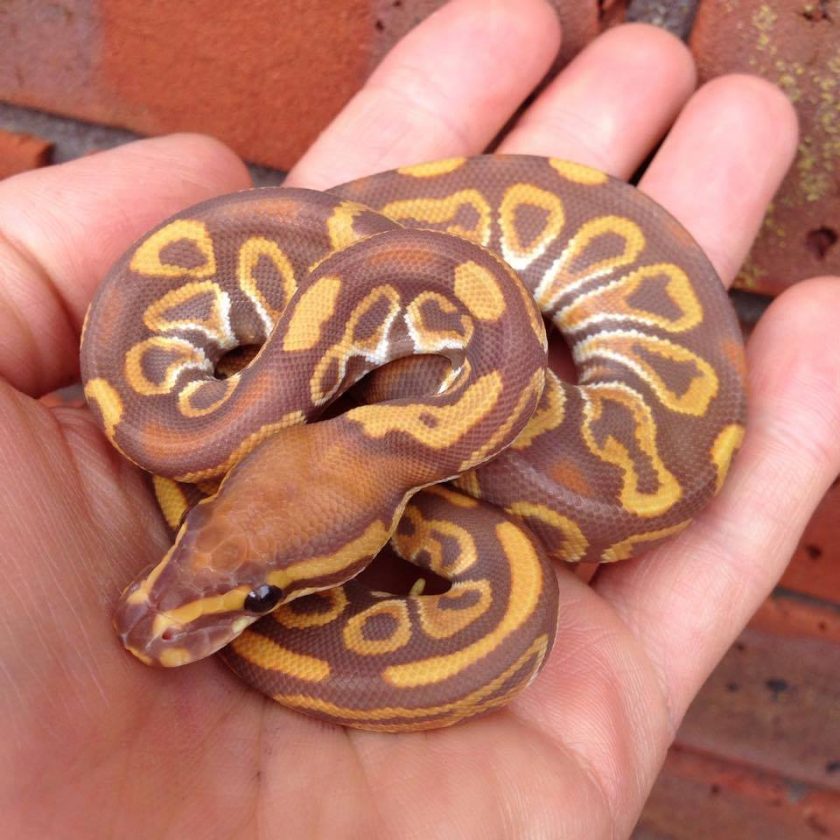 These beautiful animals attract with elegance and unpretentiousness. Royal pythons are especially in demand. It is believed that this snake is suitable for beginners: it is not very active, rather unpretentious and non-aggressive. The size of the royal (or ball python) is 1–1.5 m, it has a thick muscular body, an elegant triangular head - this is a very beautiful snake.
These beautiful animals attract with elegance and unpretentiousness. Royal pythons are especially in demand. It is believed that this snake is suitable for beginners: it is not very active, rather unpretentious and non-aggressive. The size of the royal (or ball python) is 1–1.5 m, it has a thick muscular body, an elegant triangular head - this is a very beautiful snake.
Contents
- What should be the contents of a python
- What and how to feed a snake
- Reptilife for python health
What should be the contents of the python
The snake does not need constant daily care, but in order for the reptile to be healthy and live a long time, you need to create suitable conditions for it:
- spacious terrarium. The dimensions depend on the dimensions of the python: it should be comfortable to be inside;
- volumetric drinking bowl-pool. Snakes do not just drink from water containers, they also swim there, so there should be a lot of water, and the drinker itself should be well fixed;
- temperature regime.
 In the coldest corner, the temperature should be at least 26 ° C, in the warmest - up to 32-36 ° C. The background temperature comfortable for a python is about 28 °C. The optimum humidity is 80–90%.
In the coldest corner, the temperature should be at least 26 ° C, in the warmest - up to 32-36 ° C. The background temperature comfortable for a python is about 28 °C. The optimum humidity is 80–90%.
What and how to feed a snake
Python is a predator. During the hunt, he strangles and swallows the victim whole. It can digest what it eats for several days or several weeks, depending on the size of the object. At home, the snake should be fed with food that is as close as possible to its natural prey.
- As a rule, owners of snakes buy food mice or rats, frozen or alive, in pet stores. Some pythons do not perceive an already dead mouse, since there is no thermal radiation from it. To make the food more attractive, it must be warmed in water to a temperature of 40 degrees;
- The first meal after the first lace shedding is very important. A young python cannot starve for a long time, and it must be fed. So get ready to be flexible in your choice of food items and offer your python mice, rat pups, or even young gerbils.
 In the most extreme case, force-feeding is used, but only under the supervision of an experienced specialist;
In the most extreme case, force-feeding is used, but only under the supervision of an experienced specialist; - frozen rodents are much more convenient as food, but require snake habituation. Be sure to check if the carcass is completely defrosted;
- frequency of meals depends on age. The interval between feedings of cubs should be 4-5 days, an adult python - from 1 to 3 weeks. Keep in mind that pet snakes are prone to obesity, so adjust your meals according to your pet's condition. Female pythons tend to be more voracious and larger;
- sometimes the snake refuses to eat. This is normal if the hunger strike does not last too long, although it is royal pythons that can starve for no reason for up to six months. The python also does not eat well during the molting period, when the temperature drops, if there are stress factors in its environment. If the pet does not eat for too long, has become inactive and drowsy, has lost weight and lost weight, contact a specialist;
- live rodents, especially rats and hamsters, can gnaw on a python.



